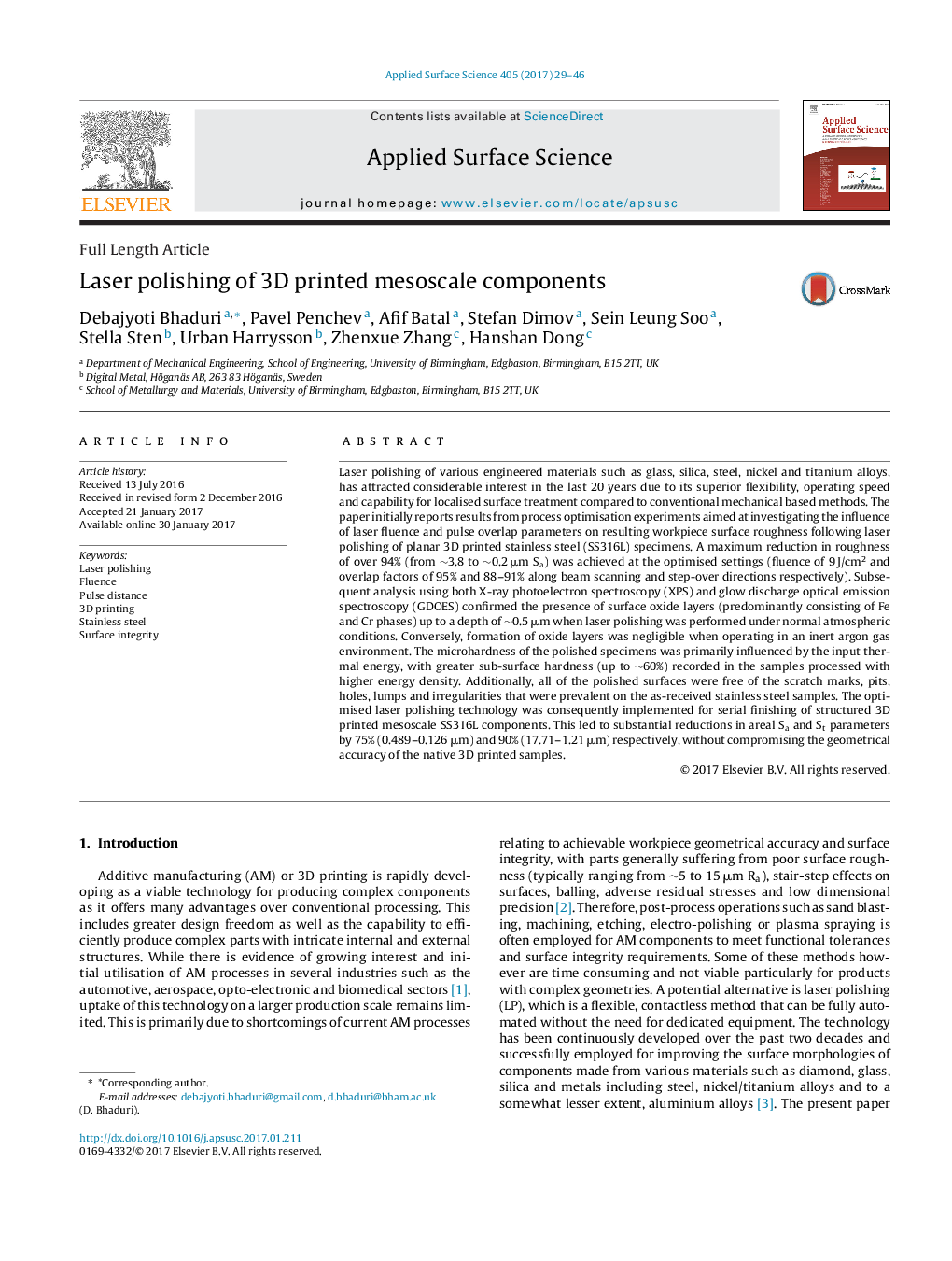| Article ID | Journal | Published Year | Pages | File Type |
|---|---|---|---|---|
| 5352138 | Applied Surface Science | 2017 | 18 Pages |
Abstract
Laser polishing of various engineered materials such as glass, silica, steel, nickel and titanium alloys, has attracted considerable interest in the last 20 years due to its superior flexibility, operating speed and capability for localised surface treatment compared to conventional mechanical based methods. The paper initially reports results from process optimisation experiments aimed at investigating the influence of laser fluence and pulse overlap parameters on resulting workpiece surface roughness following laser polishing of planar 3D printed stainless steel (SS316L) specimens. A maximum reduction in roughness of over 94% (from â¼3.8 to â¼0.2 μm Sa) was achieved at the optimised settings (fluence of 9 J/cm2 and overlap factors of 95% and 88-91% along beam scanning and step-over directions respectively). Subsequent analysis using both X-ray photoelectron spectroscopy (XPS) and glow discharge optical emission spectroscopy (GDOES) confirmed the presence of surface oxide layers (predominantly consisting of Fe and Cr phases) up to a depth of â¼0.5 μm when laser polishing was performed under normal atmospheric conditions. Conversely, formation of oxide layers was negligible when operating in an inert argon gas environment. The microhardness of the polished specimens was primarily influenced by the input thermal energy, with greater sub-surface hardness (up to â¼60%) recorded in the samples processed with higher energy density. Additionally, all of the polished surfaces were free of the scratch marks, pits, holes, lumps and irregularities that were prevalent on the as-received stainless steel samples. The optimised laser polishing technology was consequently implemented for serial finishing of structured 3D printed mesoscale SS316L components. This led to substantial reductions in areal Sa and St parameters by 75% (0.489-0.126 μm) and 90% (17.71-1.21 μm) respectively, without compromising the geometrical accuracy of the native 3D printed samples.
Related Topics
Physical Sciences and Engineering
Chemistry
Physical and Theoretical Chemistry
Authors
Debajyoti Bhaduri, Pavel Penchev, Afif Batal, Stefan Dimov, Sein Leung Soo, Stella Sten, Urban Harrysson, Zhenxue Zhang, Hanshan Dong,
